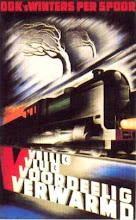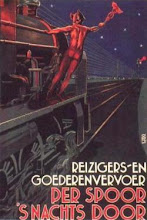

After the cooking pot treatment, there was still some yellow smuck, predominantly on the inside of the passenger car. This was removed with a brass scraper and a brass bruss (dremel tool). The outside of the car can be brushed most easily and the tin really starts to become glossy. The picture shows the car halfway the brushing treatment.
Several metal tabs were already gone or flimpsy. Thin brass strips of a L-profile (3 mm width) were cut and soldered on the inside of the passenger car to replace missing tabs. The excess of solder was sanded off. Some existing trabs were reinforced with solder.
Then the car was thoroughly cleaned with white spirit and primed with a standard light grey primer for non-ferro metals. Finally the car starts to look good again. Now, I only have to choose the final colours...









